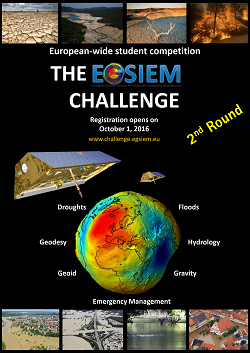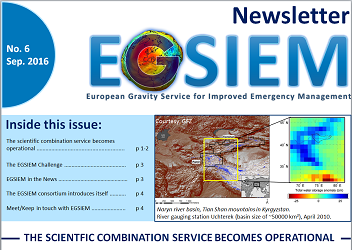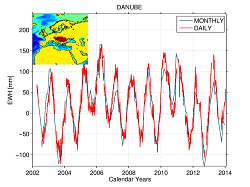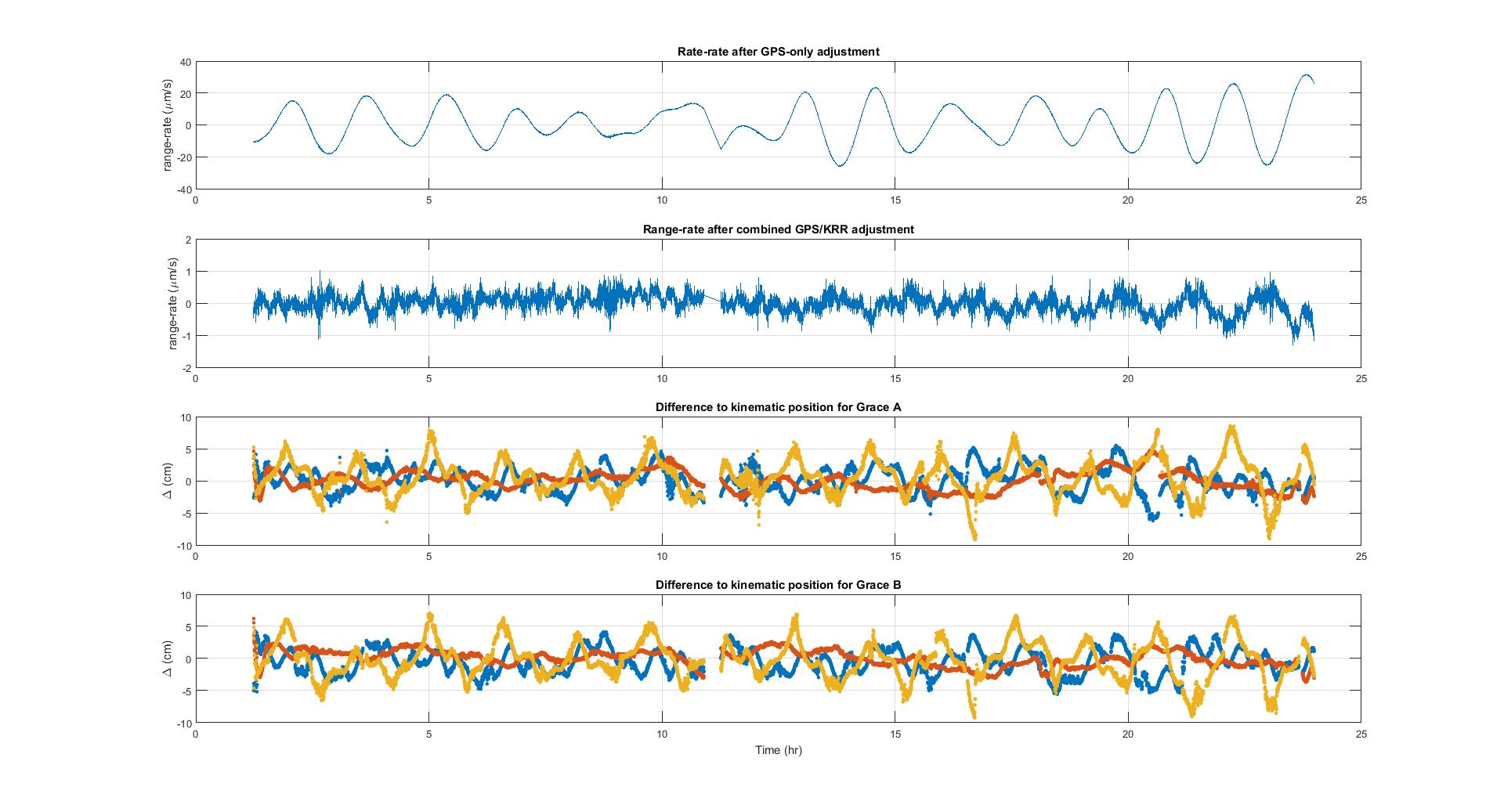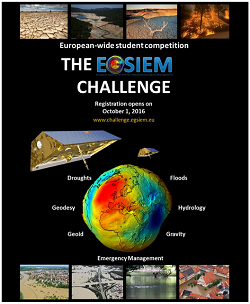
The EGSIEM student challenge is an initiative in the framework of the EGSIEM consortium. The aim of the challenge is to engage B.Sc. and M.Sc. geodesy, hydrology and other disciplines students around the European continent to be familiar with the climate change problem around the globe!
Once students have completed their registration at www.challenge.egsiem.eu (starts on 1st Oct. 2016) the first of two selection stages will involve 20 multiple-choice questions. This may sound a lot but the answers to these questions should be readily available online to students from a variety of different backgrounds. Once the students have completed the online test, and after the month-long first stage has taken place, those who have passed will be invited to take part in the second-round. This will involve more in-depth knowledge of Earth’s gravity field, hydro-gravimetry with the twin GRACE satellites and flood & drought monitoring.
In the second round of EGSIEM challenge, students will be expected to provide written answers to another 20 questions. This will again involve some online study, but will also incorporate textbooks which should already be familiar to students in the above fields.
Are you motivated to participate on the first round of EGSIEM student challenge, then register yourself now! The deadline for your participation in the 1st round of the EGSIEM challenge is 10.11.2016.





